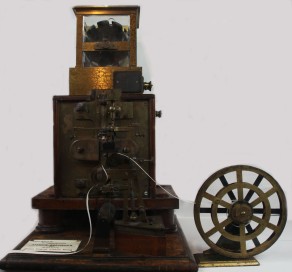Appearing in Punch magazine on 9th July 1870, this poem celebrated the recent completion of the Porthcurno-Bombay undersea telegraph cable in mock-heroic style. It followed the first exhibition of the Siphon Recorder at John Pender’s Arlington Street, London address- a demonstration which was witnessed by the Prince of Wales and the Duke of Cambridge.
Tempus Fugit
When Piccadilly’s ablaze, in the height and the heat of the season –
Rises a gaily hung tent in the yard of the mansion of Pender –
Mansion belit and bepictured and crowded with stateliest swelldom,
Swelldom that, down from blood royal, in Wales and in Cambridge embodied,
Flows through the pipes of the Peerage – Diplomacy – Ministers – Members –
Thence to the Magnates of Money and so to the syndics of Science.
Ceaseless the buzz and the bowing, the flashing of stars and garters,
Ceaseless the mopping of bows and imbibing of cooling refreshments,
Endless the glare and the glitter and gossip – the wealth and the wittles,
What have they met to accomplish, these leaders of fashion and science?
What is it brings them together, before the small siphon that, waving,
Scatters ifs fine jet of ink in accord with the pulses electric,
So making plain to the eye what the spark through the wire is conveying;
What is transacting tonight in the tent in the mansion of Pender?
Lo, ‘tis Britannia stretching invisible hands under ocean,
Bringing the furthermost East and the uttermost West into contact;
So does the spark of our wires outpace e’en the fleet foot of Chronos!
Miracle-workers are we – sitting here in the mansion of Pender,
Gossiping thus at our ease, over Continents, Hemispheres, Oceans,
Saying to space “Be no more,” and to baffled Time, “Get thou behind me!”

This original Siphon Recorder is one of the ten original Recorders used on the 1870 Porthcurno – Bombay undersea telegraph cable. This one has until recently been on display in Porthcurno’s famous WW2 tunnels, and will feature in the museum’s new exhibitions, opening in summer 2014. The only other example known to have survived is in the collection of the Science Museum, London.
